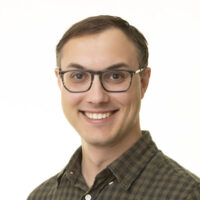Expertise
Areas of Specialization
Research Clusters
Current status
-
Accepting graduate students
-
Assistant Professor
Chemical Engineering
Overview
Our everyday life is made possible through thousands of different chemicals – everything from your dish soap to your T-shirts are derived from oil-based chemicals. The expansive chemicals industry accounts for 30% of industrial energy use and 14% of global oil demand, half of which is used as feedstock material. Much of what we create was never intended for perpetual use: every year, consumers discard 2 billion tonnes of waste, of which 1.4 billion tonnes goes directly to landfill.
The Linley Lab is working on direct sunlight-powered solutions for sustainable production of fuels and chemicals from waste carbon to reduce the environmental impact of industry. Our core interest is solar reforming, a photocatalytic process that uses electrons from waste carbon to produce high-energy molecules like H2. We are doing this by focusing on three areas:
Photocatalyst Composites:
Photocatalysts are materials or molecules that absorb light and use that energy to drive chemical reactions. Our team is exploring how heterogenous photocatalysts can be improved through modification and incorporation into functional composites. For example, by attaching photocatalysts to low-density supports we can make a material that floats in water, is easy to re-use, and concentrates the photocatalyst at the surface of the water. By incorporating magnetic nanoparticles in a photocatalyst composite, we can collect the photocatalyst with a strong magnetic field. These changes make our photocatalysts more useful than they are on their own.
Catalyst Application:
Solar reforming (SR) is a sunlight-driven process that enables circular use of waste carbon by transforming it into useful products. This can be done using photocatalysts (or photocatalyst composites) to drive oxidation and reduction reactions. The catalyst can donate excited electrons to make high-energy molecules, then accept replacement electrons from waste, breaking it down in the process. This means we can simultaneously treat wastewater containing organic contaminants and produce CO2-free fuels such as H2.
Chemical Processes:
To effectively use SR, we need to make sure that our processes and reactions are well optimized. This includes applying pre-treatments to waste streams to ensure they can be used by our photocatalyst composites, designing reactors and process controls that efficiently use sunlight and re-use our catalysts, and integrating light management strategies to increase production rates and reaction kinetics.
Opportunities:
Stuart is always looking for bright, enthusiastic young researchers to join his team. If you are interested in joining our team, please contact Stuart by email at linleys@mcmaster.ca with:
- Your CV
- Your transcript
- A brief personal statement expressing your research interests
I joined the department of Chemical Engineering in July, 2023 with plans to continue my focus on environmental applications of nanomaterials, particularly photocatalysts. I started my academic journey at the University of Waterloo with an undergraduate degree in nanotechnology engineering where, through the co-op program, I developed methods of synthesizing and applying magnetically recoverable photocatalysts with Frank Gu. In 2013, I began investigating photocatalytic treatment of tailings pond wastewater leading to co-founding H2nanO Inc. in 2015 – a start-up company out of the University of Waterloo’s Velocity program seeking to develop low-cost water treatment solutions for Canada’s oil sands industry. I was also a recipient of the Vanier Canada graduate scholarship and my PhD work focused on targeted delivery of nanoparticles to contaminated groundwater environments with Frank Gu and Neil Thomson. Following my PhD, I was awarded an NSERC Postdoctoral Fellowship to pursue the development of reusable photoreforming catalysts with Erwin Reisner at the University of Cambridge, UK in 2020. I continued my work with Reisner’s group until June of 2023, when I returned to Canada to start my career at McMaster.
Outside of the lab, I’m an avid chorister, having sung in the Kitchener-Waterloo Grand Philharmonic Choir, the Trinity Hall Chapel Choir in Cambridge, and now the Bach-Elgar Choir in Hamilton. I also enjoy board games, trivia, brewing, and the odd film (the odder, the better).
- BASc in Nanotechnology Engineering – University of Waterloo (2014)
- D. in Chemical Engineering – University of Waterloo (2019)
- NSERC Postdoctoral Fellow – University of Cambridge (2020-2022)
- Postdoctoral Research Associate – University of Cambridge Department of Chemistry (2022-2023)
- NSERC Postdoctoral Fellowship (2020-2022)
- Ontario Graduate Scholarship (2018-2019)
- Waterloo Institute for Nanotechnology Nanofellowship (2015)
- Vanier Canada Graduate Scholarship (2014-2017)
- Floating Carbon Nitride Composites for Practical Solar Reforming of Pre-Treated Wastes to Hydrogen Gas
Stuart Linley, Erwin Reisner
2023, Advanced Science 10 (21), 2207314 - Comproportionation of CO2and Cellulose to Formate Using a Floating Semiconductor-Enzyme Photoreforming Catalyst
Erwin Lam, Melanie Miller, Stuart Linley, Rita R. Manuel, Inês A. C. Pereira, Erwin Reisner
2023, Angewandte Chemie International Edition 62 (20), e202215894 - Strategies to improve light utilization in solar fuel synthesis
Qian Wang, Chanon Pornrungroj, Stuart Linley, Erwin Reisner
2022 Nature Energy 7 (1), 13-24



